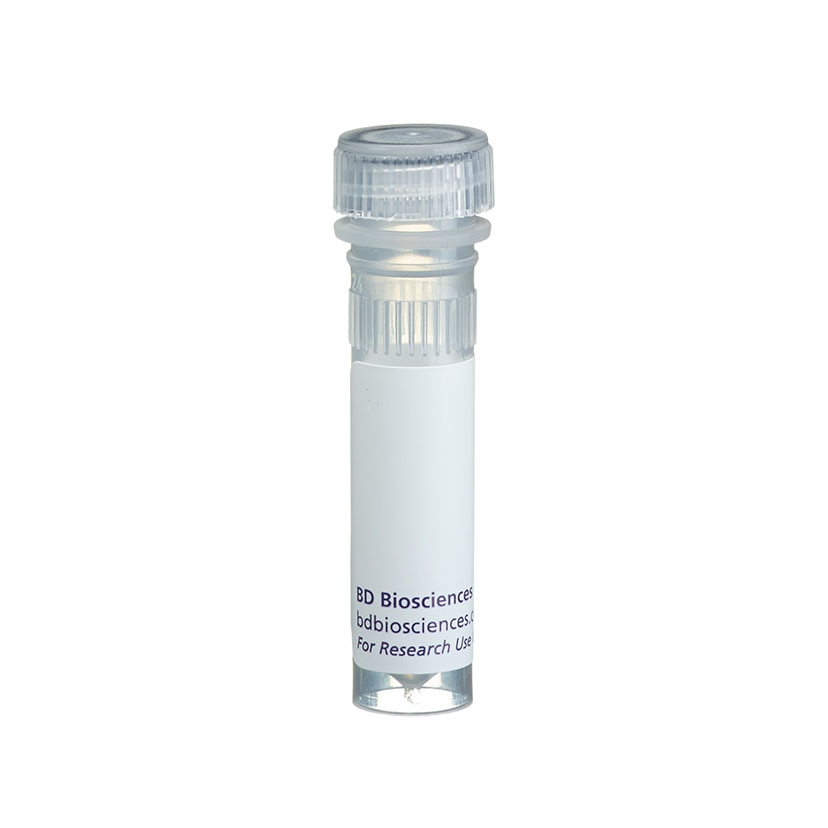Old Browser
This page has been recently translated and is available in French now.
Looks like you're visiting us from {countryName}.
Would you like to stay on the current country site or be switched to your country?


Regulatory Status Legend
Any use of products other than the permitted use without the express written authorization of Becton, Dickinson and Company is strictly prohibited.
Preparation And Storage
Product Notices
- Since applications vary, each investigator should titrate the reagent to obtain optimal results.
- Please refer to www.bdbiosciences.com/us/s/resources for technical protocols.
Companion Products

.png?imwidth=320)
The 4RA10 antibody reacts with the N-terminal functional peptide of CD162 (P-selectin glycoprotein ligand-1, PSGL-1), encoded by the Selpl gene. PSGL-1 is expressed on the cell surface as a homodimer of approximately 230 kDa. In the mouse, Selpl mRNA is detected in most tissues, with high levels found in hematopoietic cells, brain, and adipose tissue. Flow cytometric analyses have revealed CD162 expression on bone marrow-derived mast and dendritic cells, splenic leukocytes, platelets, peripheral blood neutrophils, and neutrophil and T-cell lines. PSGL-1 is a ligand for P-selectin (CD62P) and is involved in leukocyte rolling, the migration of leukocytes into inflamed tissues, and responses to vascular injury. It is a sialomucin that must be specifically sialylated, fucosylated, and sulfated to bind P-selectin. There is also evidence that other ligands for PSGL-1 and CD62P may exist. 4RA10 mAb is reported to block the binding of mouse leukocytes to CD62P and CD62L.
Development References (12)
-
Borges E, Eytner R, Moll T, et al. The P-selectin glycoprotein ligand-1 is important for recruitment of neutrophils into inflamed mouse peritoneum. Blood. 1997; 90(5):1934-1942. (Biology). View Reference
-
Borges E, Tietz W, Steegmaier M, et al. P-selectin glycoprotein ligand-1 (PSGL-1) on T helper 1 but not on T helper 2 cells binds to P-selectin and supports migration into inflamed skin. J Exp Med. 1997; 185(3):573-578. (Biology). View Reference
-
Frenette PS, Denis CV, Weiss L, et al. P-Selectin glycoprotein ligand 1 (PSGL-1) is expressed on platelets and can mediate platelet-endothelial interactions in vivo. J Exp Med. 2000; 191(8):1413-1422. (Clone-specific: Blocking). View Reference
-
Hirata T, Furie BC, Furie B. P-, E-, and L-selectin mediate migration of activated CD8+ T lymphocytes into inflamed skin. J Immunol. 2002; 169(8):4307-4313. (Biology). View Reference
-
Hirata T, Merrill-Skoloff G, Aab M, Yang J, Furie BC, Furie B. P-Selectin glycoprotein ligand 1 (PSGL-1) is a physiological ligand for E-selectin in mediating T helper 1 lymphocyte migration. J Exp Med. 2000; 192(11):1669-1675. (Biology). View Reference
-
Li F, Wilkins PP, Crawley S, Weinstein J, Cummings RD, McEver RP. Post-translational modifications of recombinant P-selectin glycoprotein ligand-1 required for binding to P- and E-selectin. J Biol Chem. 1996; 271(6):3255-3264. (Biology). View Reference
-
Pendl GG, Robert C, Steinert M, et al. Immature mouse dendritic cells enter inflamed tissue, a process that requires E- and P-selectin, but not P-selectin glycoprotein ligand 1. Blood. 2002; 99(3):946-956. (Immunogen: Blocking, Immunoprecipitation, Western blot). View Reference
-
Phillips JW, Barringhaus KG, Sanders JM, et al. Single injection of P-selectin or P-selectin glycoprotein ligand-1 monoclonal antibody blocks neointima formation after arterial injury in apolipoprotein E-deficient mice. Circulation. 2003; 107(17):2244-2249. (Clone-specific: Blocking). View Reference
-
Sperandio M, Smith ML, Forlow SB, et al. P-selectin glycoprotein ligand-1 mediates L-selectin-dependent leukocyte rolling in venules. J Exp Med. 2003; 197(10):1355-1363. (Clone-specific: Blocking). View Reference
-
Steegmaier M, Blanks JE, Borges E, Vestweber D. P-selectin glycoprotein ligand-1 mediates rolling of mouse bone marrow-derived mast cells on P-selectin but not efficiently on E-selectin. Eur J Immunol. 1997; 27(6):1339-1345. (Biology). View Reference
-
Xia L, Sperandio M, Yago T, et al. P-selectin glycoprotein ligand-1-deficient mice have impaired leukocyte tethering to E-selectin under flow. J Clin Invest. 2002; 109(7):939-950. (Clone-specific: Blocking). View Reference
-
Yang J, Galipeau J, Kozak CA, Furie BC, Furie B. Mouse P-selectin glycoprotein ligand-1: molecular cloning, chromosomal localization, and expression of a functional P-selectin receptor. Blood. 1996; 87(10):4176-4186. (Biology). View Reference
Please refer to Support Documents for Quality Certificates
Global - Refer to manufacturer's instructions for use and related User Manuals and Technical data sheets before using this products as described
Comparisons, where applicable, are made against older BD Technology, manual methods or are general performance claims. Comparisons are not made against non-BD technologies, unless otherwise noted.
For Research Use Only. Not for use in diagnostic or therapeutic procedures.
Report a Site Issue
This form is intended to help us improve our website experience. For other support, please visit our Contact Us page.